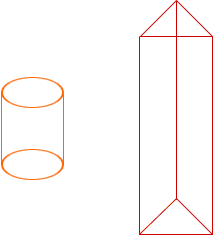Hello,
I am trying to find a formula to solve a volume question.
I have been given the information of the length of the trough, and the end pieces are isosceles triangles, and two equal sides of the triangle are given. I cannot seem to find the answer, nor anything in my book relating to the question.
Thanks,
Matt
The trough you have described and a circular cylinder are simular in that each is a solid with a plane region as its base and sides made up of straight lines perpendicular to the base.

The volume of such a solid is the area of the base times the height. For a cylinder the volume is pi r2 times the height and for your trough it is the area of the triangle times the height. Hence to solve your problem you need to find the area of the triangle.
Cheers,Harley